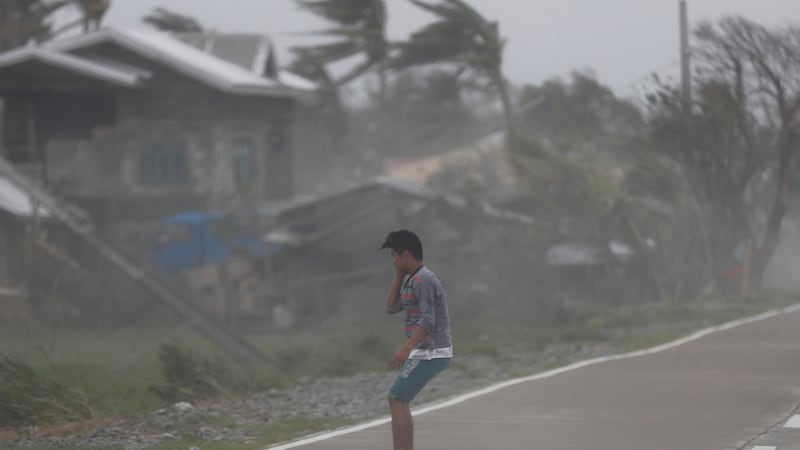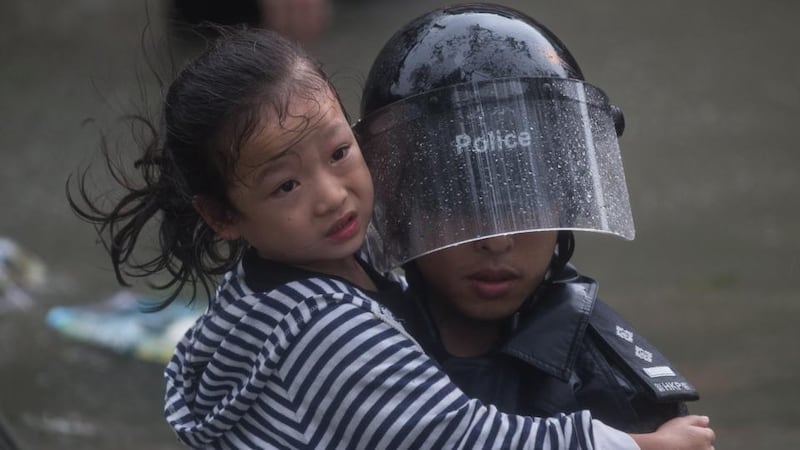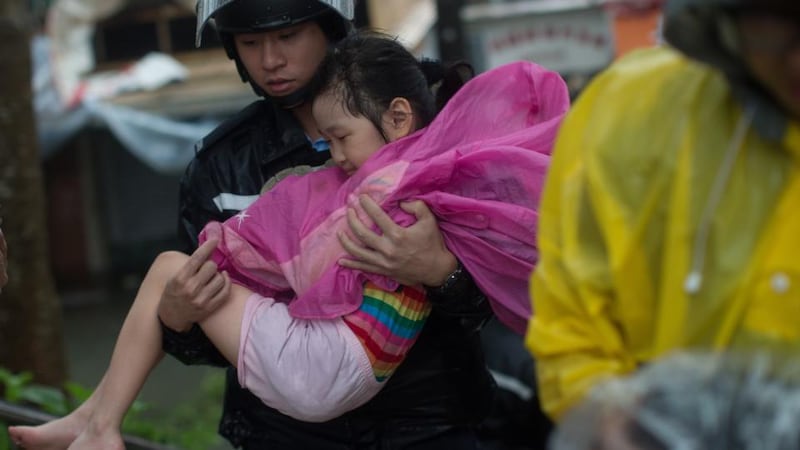Typhoon Mangkhut has made landfall in southern China after lashing the northern Philippines.
Strong winds and heavy rain have left at least 64 people dead in the archipelago, while dozens more were feared buried in a landslide.
At least 40 people, mostly gold miners, are feared trapped after the landslide in a provincial part of the Philippines. Police said seven bodies had already been dug out by rescuers after part of a mountain slope collapsed on the miners’ bunkhouses.
The incident happened in a far-flung village of Itogon town in Benguet province after winds of more than 200km/h and rain pounded the gold-mining region on Saturday.
Meanwhile, more than 2.4 million people had been evacuated in southern China's Guangdong province by Sunday evening to flee the massive typhoon and nearly 50,000 fishing boats were called back to port, state media reported.

The gambling enclave of Macau closed casinos for the first time and the Hong Kong Observatory warned people to stay away from the Victoria Harbour landmark, where storm surges battered the sandbag-reinforced waterfront.
Hong Kong’s RTHK broadcaster cited experts as saying Mangkhut was expected to be the strongest typhoon to hit the city in decades. The Hong Kong Observatory issued its strongest storm warning for a 10-hour period on Sunday, just slightly shorter than the record time of 11 hours set by Typhoon York in 1999, the South China Morning Post reported.

The storm made landfall in the Guangdong city of Taishan at 5pm, packing wind speeds of 100 mph.
State broadcaster CGTN reported that surging waves flooded a seaside hotel in the city of Shenzhen.
Groceries flew off supermarket shelves in the provincial capital of Guangzhou as residents stocked up in anticipation of being confined to their homes by the typhoon, China's official Xinhua News Agency said.
Authorities in southern China issued a red alert, the most severe warning, as the national meteorological centre said the densely populated region would face a “severe test caused by wind and rain” and urged officials to prepare for possible disasters.

Hundreds of flights were cancelled. All high-speed and some normal rail services in Guangdong and Hainan provinces were also halted, the China Railway Guangzhou Group Co said.
The storm broke windows, felled trees, tore bamboo scaffolding off buildings under construction and flooded areas with sometimes waist-high waters, according to the South China Morning Post. The paper said the heavy rains brought storm surges of 3m (10ft) around Hong Kong.

Hong Kong security minister John Lee Ka-chiu urged residents to prepare for the worst.
“Because Mangkhut will bring winds and rains of extraordinary speeds, scope and severity, our preparation and response efforts will be greater than in the past,” Mr Lee said. “Each department must have a sense of crisis, make a comprehensive assessment and plan, and prepare for the worst.”

Hong Kong's Cathay Pacific said all of its flights would be cancelled between 2.30am on Sunday and 4am on Monday. The city of Shenzhen also cancelled all flights between Sunday and early Monday morning. Hainan Airlines cancelled 234 flights in the cities of Haikou, Sanya, Guangzhou, Shenzhen and Zhuhai scheduled over the weekend.
In Macau’s inner harbour district, the water level reached 1.5m (5ft) on Sunday and was expected to rise further. The district was one of the most affected by floods from Typhoon Hato, which left 10 people dead.
Before the mine landslide, Mangkhut was said to have killed at least 29 people in the Philippines.
The tropical cyclone is considered the strongest to have hit the region this year, equivalent to a maximum Category 5 “intense hurricane” in the Atlantic. – Associated Press/Reuters












